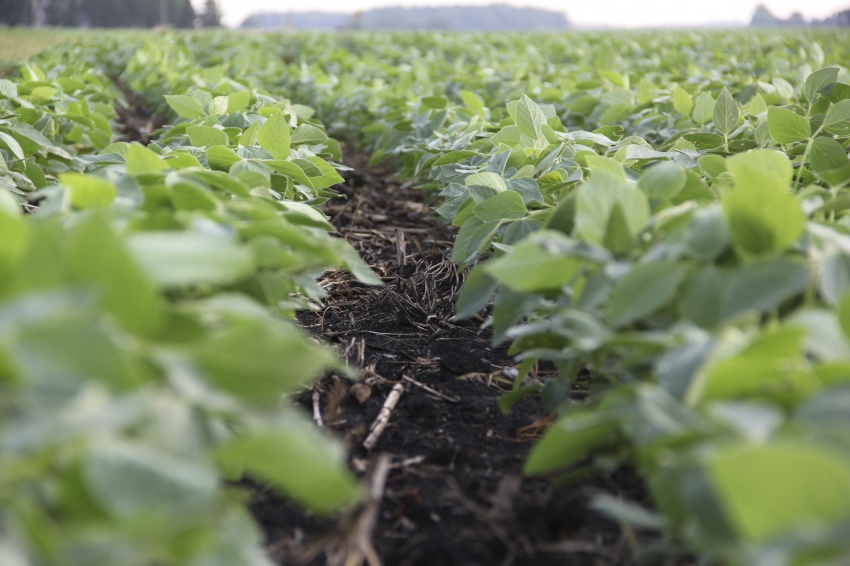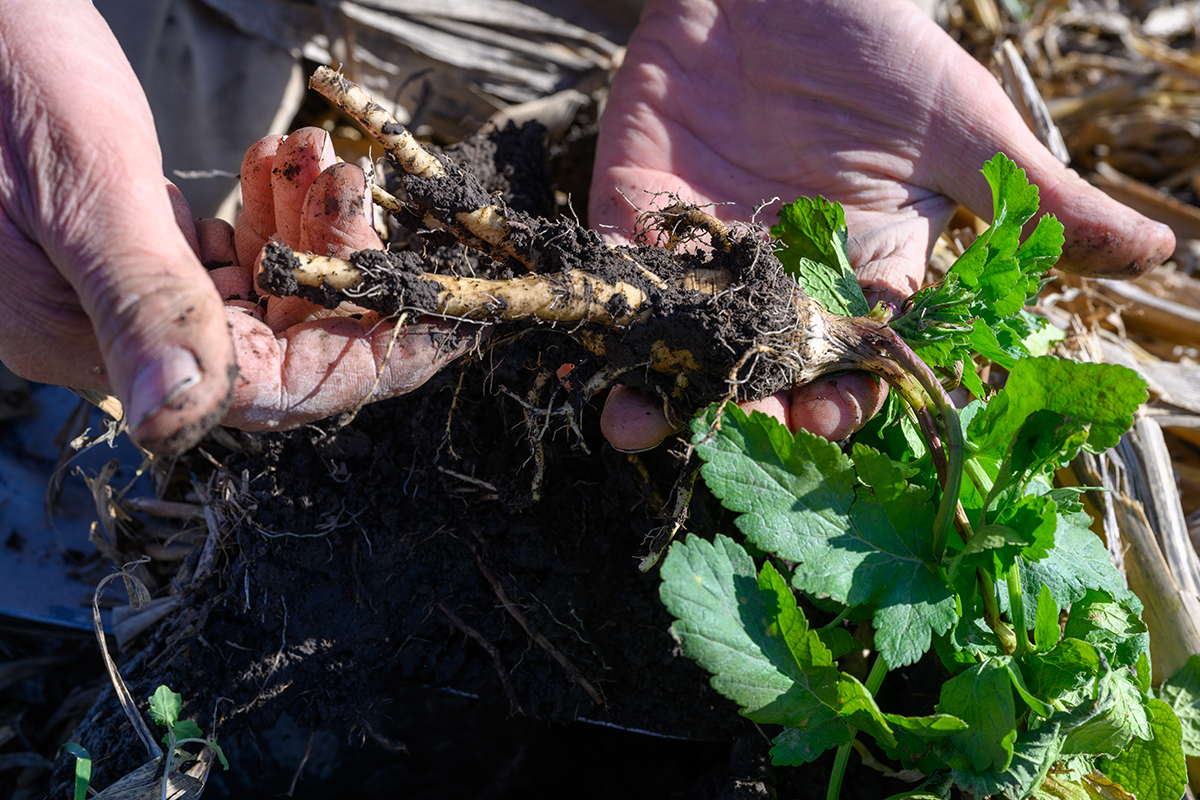Soil Health Has Its Benefits

Better understanding of soil organic matter can help improve soybean production
Farmers know the value of their soil. And organic matter is a key piece of a soil profile that farmers are working to protect. But when various industries, researchers, organizations and agencies differ in their opinions about what elements should be included in soil organic matter (SOM), it can be a daunting task.
But all parties can agree that SOM is very complex, deserves attention and is one of the least understood components of soils. Researchers point out that it has been directly and positively related to soil fertility and agricultural productivity potential.
The Soil Science Society of America defines SOM as the organic fraction of soil after removing undecomposed plant and animal residues. In most agricultural soils, organic matter is increased by leaving residue on the soil surface, rotating crops with pasture or perennials, incorporating cover crops into the cropping rotation, or by adding organic residues such as animal manure.
Pieces of the puzzle
Jodi DeJong-Hughes, University of Minnesota Extension educator, has dedicated a lot of time and effort to researching and educating about soils. As she points out when speaking with farmers, SOM is a complicated puzzle.
“Soil organic matter improves the structure of the soil, which ultimately aids in water infiltration, water retention, bulk density of soil, defense against compaction damage and reduces the potential for erosion by wind or water,” she says.
DeJong-Hughes says there are a lot of things going on in the soil that cannot be seen or measured, but, “out of sight is not out of mind.”
Organic matter is also known to hold nutrients in the soil better so they don’t leach.
“Building soil health is so important, and probably every farmer could improve the health of their soil,” DeJong-Hughes said. “Lots of farmers are really up on equipment technology or corn and soybean hybrids, but soil is still fairly unknown to us. We’re just hitting the tip of the iceberg in what the soil does and can do for us.”
Cover crops and soil organic matter
DeJong-Hughes has also worked closely with Abbey Wick, Ph.D., North Dakota State University Extension assistant professor of soil health, a big proponent of cover cropping. She points out that using a cover crop mix can increase organic matter through root turnover in the soil. This can ultimately lead to taking inorganic forms of nutrients that can leach and turning them back into an organic form that can be retained for the following year.
“The Conservation Technology Information Center, with funding from Sustainable Agriculture Research and Education, has done several cover crop surveys the past couple years,” says Wick. “They are finding that soybean yields can be increased by an average of 2.19 bushels per acre, or 4.2 percent, following a cover crop. But reasons for utilizing cover crops on one’s farm are different for every farmer.”
Wick says that even with this data, most farmers are using cover crops for other reasons besides boosting yields, like erosion control, for example. And while cover crops do have their benefits, it would be naïve to say there are not any disadvantages. Some of the downsides she points out include time for establishment, herbicide residual and the learning curve to figure out cover crops and how to incorporate them.
“Other than those, I have not seen a whole lot of disadvantages to using cover crops,” Wick said.
Courtesy Minnesota Soybean Research & Promotion Council
Tips to Improve Your Soil Organic Matter
1. Use reduced-tillage techniques, including no-till, strip-till or ridge-till. Leave as much residue as possible on the soil surface.
2. Apply livestock manure or incorporate cover crops. Adding organic residue to the soil surface can restock needed carbon to the soil.
3. Include perennial or companion crops into rotation. These will increase organic matter content over time, reduce pest and disease pressure, reduce fertilizer inputs and help control erosion. Crop rotations can include perennial grasses and legumes.
4. Carefully manage fertilization and soil nutrients. This will affect the soil microbial community, ultimately increasing production of plant biomass to serve as a microbial food source. There is still no clear answer to how fertilization affects SOM levels since vegetation, soil type, climate and the type of SOM present are also factors that must be considered.
Benefits of Improving Soil Organic Matter
- Get into the field sooner after rainfall
- Less plant stress during the dry months
- Break up pest cycles
- Potential for higher nitrogen mineralization
- Less compaction
- Less erosion
- Less fuel, labor and parts costs
- Soil and nutrients stay in field with less leaching or erosion
Remember: Soil health is specific to soil type and geography.



